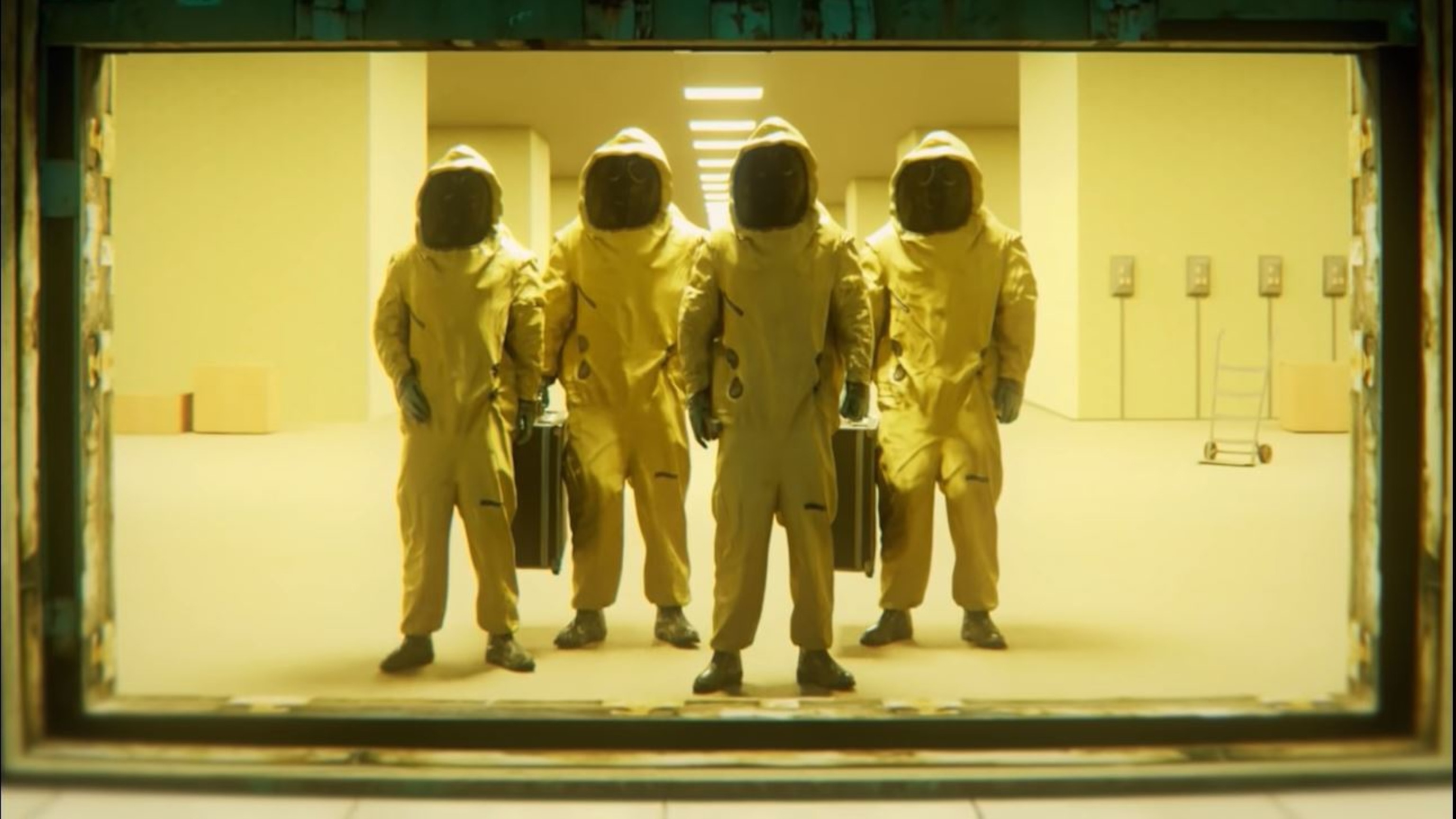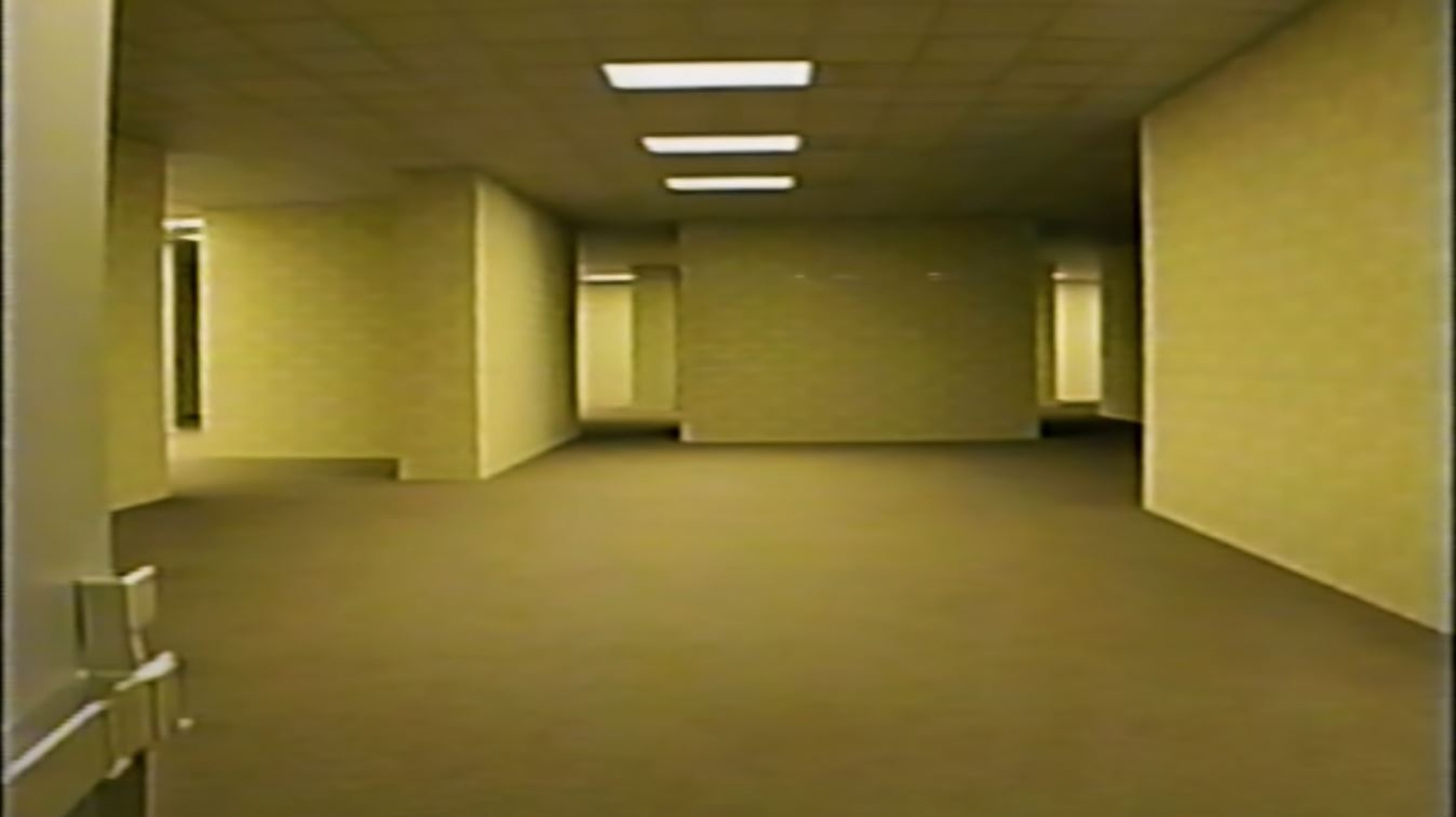The Backrooms: Horror storytelling goes online
"The Backrooms" is an imagined space of dimly-lit, never-ending yellow hallways.
There are plenty of ways for horror fans to get their scares - from picking up a Stephen King novel, to turning on a John Carpenter movie, or even pressing play on an episode of the "Welcome To Night Vale" podcast. But a growing community of creatives think the next great horror tale may not come from a book, or a movie, but rather the internet.
"In the digital era that we live in, it is that much easier for anyone with an internet connection to share their stories, their fables, their pieces of art to, you know, to the public," Samantha Culp, a writer and filmmaker based in California, said to ABC Audio.
She says this emerging genre of online storytelling is collaborative - anyone can build off of another person's idea. And unlike other fan communities, which adapt and add to existing properties like "Supernatural," "Doctor Who," or "Sherlock," many horror fans are creating entirely new stories and worlds for others to delve into.

One of the most popular stories in this new genre is "The Backrooms" - an imagined space of dimly-lit, never-ending yellow hallways. The idea is based - not on a book or a movie - but rather a photo to an online message board back in 2019.
"There was one particular photo posted first to 4Chan, and then it migrated quickly over to Reddit, of this particular image of a kind of underground or windowless interior space," Culp said. "Maybe it's a basement, maybe it's an office hallway … it's at a strange angle, and it's extremely eerie and unsettling at first glance," Culp said.
The original post doesn't contain any information about when or where the picture was taken, or who took it. But one thing is for sure - the image conjures a very specific kind of feeling in many who look at it. It's a feeling Culp says has to do with our relationship to what are known as "liminal spaces."
"This is the normal space, that is somehow now estranged, because it's not doing its normal function" Culp said.
Empty airport lounges or hotel lobbies are examples of liminal spaces - places that are normally bustling with people that for some reason have been abandoned. Another common liminal space Culp cites is a high school after classes end for the day.
"If you've ever been at your high school after hours, like after a sports game or something, and it's empty, there's sort of this really strange sense," Culp said. "A lot of these writers - young creators and writers and artists that are engaging with liminal spaces and The Backrooms talk about that being a formative … experience of liminality."
The photo inspired another anonymous user to write a short caption, imagining what it would be like to find oneself in The Backrooms, "where it's nothing but the stink of old moist carpet, the madness of mono-yellow, the endless background noise of fluorescent lights at maximum hum-buzz, and approximately six hundred million square miles of randomly segmented empty rooms to be trapped in."
"This original image prompted an original story," Culp said, "which kind of conjured almost an entire universe of inspiration for people engaging in, you know, writing, cinema, art, video game making, illustration, even music and soundscapes."
Kane Parsons, a high school senior who goes by "Kane Pixels" online, is one of the most popular Backrooms creators. His collection of short films have netted tens of millions of views on YouTube, most of which he made using the free online CGI software "Blender."
"I came across the original image on my computer … and I just thought, huh, it would be interesting to see if I could go to my 3D software, Blender, and try to recreate a scene in this environment," Parsons told ABC Audio.
His videos tell the story of a shadowy organization, called ASYNC, which in the late 1980s opens a portal connecting the real world to The Backrooms.
"It's a slow burn story focusing on both the politics of ASYNC and the United States government, as well as the otherworldly, confusing functions of the complex, or The Backrooms."

Parsons is far from alone - Backrooms content has surged in popularity in recent years, with some creators exploring what other floors of the Backrooms look like, and others populating those spaces with monsters.
Culp says those creatures range from "the plausibly scary, like fast-moving kind of like shadow people, to kind of deliberately silly. Like, Shrek in a party hat is on some level of The Backrooms in this expanded, kind of, lore universe."
As in many online communities, divisions have emerged. Some fans disapprove of the more lighthearted storylines that have cropped up in The Backrooms, instead preferring the isolated horror of the original photo.
"There's lots of other people who are kind of purists who are like, 'no, we like the original!'" Culp said.
Unlike the fandoms that crop up around existing properties - where there is a clear distinction between "canonical" storytelling and fan fiction - no one person owns The Backrooms, which means drawing a line between authentic storytelling and jokes is more difficult.
"There's sort of a battle between the originalists, the purists, and the expansionists," Culp said.
Parsons, for his part, says he understands the purists' point of view, though he doesn't necessarily agree. His strategy is instead to tell a story that expands on the original post, while maintaining the atmosphere it evokes.
"I want to make something is telling this story which I believe is meaningful, that I have come up with, while also maintaining that feeling that was present in the original post," Parsons said. "So I think it's a balance."
"Most definitely there has been some vocal, negative people out there expressing that feeling," Parsons said, but he added that isn't the norm.
"For the most part I think everyone has been very tolerant and just great - very mature about how this has all played out," he said.
The Backrooms is just one example in an emerging genre of collaborative online horror. Other stories include the SCP Foundation - a Wikipedia-style website where anyone can document "anomalies; items and critters that do not follow the rules of nature as we know them." Or there's the Mystery Flesh Pit National Park, a fictional national park in Texas that's also a mysterious, living pit of flesh.
"Clearly the amount of effort and passion people have for engaging with these stories, these bits of folklore or kind of these emerging mythologies, is both kind of something that is very new and a new generation growing up online is kind of naturally both able to and interested in doing this," Culp said, adding "and also it's connected to I think a very, just, ancient human impulse about storytelling and art, and the functions that that serves for our communities large and small."
Parsons says the response to his Backrooms contributions have been broadly very positive. Despite spending eight hours per day working on videos, he says it's all worth it.
"I just love doing this," he said. "I somehow almost never burn out. And I think that's partially because of how much people love this series. It just feels like everything I do has value."
And for fans who aren't done exploring those seemingly infinite hallways, he says he's not done yet.
"I can't say much, I can't say really anything, but there's more to come, there's definitely more to come," he said. "Years - years of Backrooms to come."
LISTEN to ABC Audio's Mike Dobuski report on The Backrooms:




